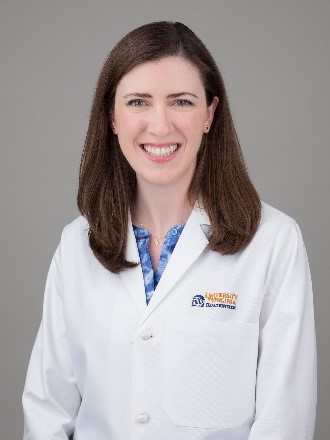Improving HIV care by innovating service delivery in the U.S.: The need for change
Facebook Twitter LinkedIn Email Every week in HIV clinic, Kathleen A. McManus, MD, MS, an assistant professor of medicine in the Division of Infectious Diseases and International Health at the University of Virginia School of Medicine, sees people for whom the status quo of HIV care is not working. This past spring, she and others took part in a three-part policy consultation series hosted by HIVMA to discuss innovative health care delivery models for improving health care access, health outcomes and quality of life for people with HIV and people at risk for HIV. The goal was to come away with an action plan for doing things differently.
Every week in HIV clinic, Kathleen A. McManus, MD, MS, an assistant professor of medicine in the Division of Infectious Diseases and International Health at the University of Virginia School of Medicine, sees people for whom the status quo of HIV care is not working. This past spring, she and others took part in a three-part policy consultation series hosted by HIVMA to discuss innovative health care delivery models for improving health care access, health outcomes and quality of life for people with HIV and people at risk for HIV. The goal was to come away with an action plan for doing things differently.
In this post, the first of three inspired by the policy consultation series, Dr. McManus discusses why new care models are needed and what it will take to implement them.
During a very busy spring, why did you make time to participate in these meetings?
I wanted to participate in the meetings so that I could continue to learn from other colleagues’ innovations and successes. Every week in HIV clinic, I see people for whom the status quo of HIV care is not working. With our current system, there are a lot of barriers and issues. We need to reimagine HIV care and encourage it by allowing clinics and organizations more flexibility and support so that they can deliver care that meets people where they are.
Why are new health care delivery models needed?
New health care delivery models, such as street medicine and differentiated care delivery, are needed because our current HIV care system is only working for some people. A lot of the current care model is dictated by insurance companies or funders. That is a problem because insurance companies and funders are not always thinking about the person receiving the care. In terms of public health and ending the HIV epidemic in the United States, if we want to reach the 35% of people with HIV with detectable HIV viral loads, we will need to deliver care differently.
What would it take to implement these models in your communities?
To implement these models more broadly, HIV clinics and organizations need adequate funding and reimbursement for the care as well as institutional support, financial support, appropriate staffing, and logistical or technical assistance. There will be people and communities who don’t want to change their care models. To convince people who are naysayers, we will need evidence that the new models result in healthier people with higher rates of viral suppression and/or improved patient satisfaction.
What was the most important takeaway from the meeting?
From the meetings, it was exciting to come away knowing that there are pockets of innovation where people are reimagining health care service delivery for HIV care. Some HIV clinics and organizations are prioritizing care that meets people where they are and that helps people to thrive. Many of these innovations are designed and inspired by people who need the services. The HIV community needs to help to identify the best practices, and then clinics, organizations, policymakers, funders, federal and state governments, and regulators need to ensure that more people with HIV have access to care that is centered on their needs.
What role do health care providers have in advancing innovative health care delivery models?
Clinicians certainly have a role in helping to advance innovative health care delivery models. Those with leadership roles can examine what unmet needs their community has in terms of innovative HIV care, and those who deliver care can talk with their clinics/organizations about possible innovations. Through HIVMA Action Calls, clinicians can advocate for robust and flexible funding for HIV care from the federal and state governments. We can also voice our support for innovative care to our state health departments. Clinician-scientists can also help by studying the innovations so that we will have evidence about the outcomes and patient satisfaction associated with the innovations. Also, since innovations often need to be adapted to local communities, implementation science studies will be essential to help us learn how different communities can adapt the new care models.
Why do we need to do things differently?
Due to scientific breakthroughs, we have well-tolerated and highly effective medications for HIV treatment that are available in oral and injectable formulations. Unfortunately, despite these scientific advancements, there is a large chasm between the science and the implementation. In clinical trials, often more than 90% of participants achieve viral suppression, but in the real world in the United States, 35% of people with HIV have detectable viral loads. We are not getting HIV treatment to everyone who needs it. People are being left behind, and this can have deadly impacts for the individual and negative impacts for public health. Additionally, often the people being left behind are people with minoritized identities relative to race, ethnicity, gender, socioeconomic status, religion, sexuality and disability, and this worsens care inequities.
Don’t miss the other posts in the series, featuring Rupa Patel, MD, MPH, who shares her perspective and key takeaways as a provider, and Alice Ferguson, who discusses the need for improvements in how HIV care is delivered and the role of community health workers.


